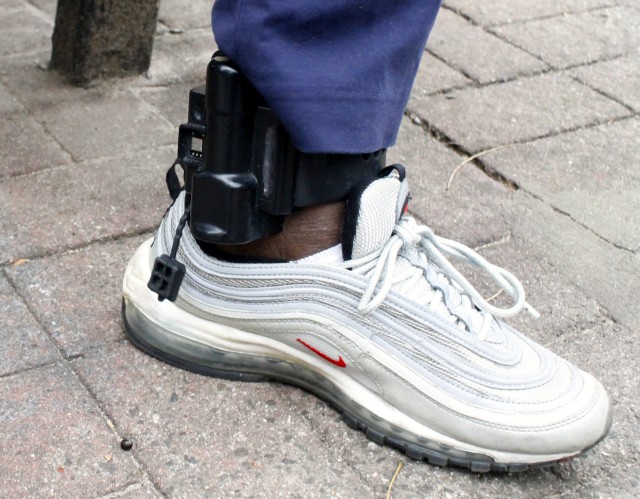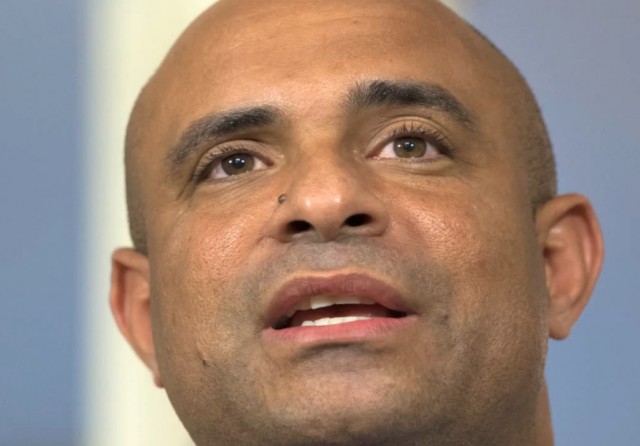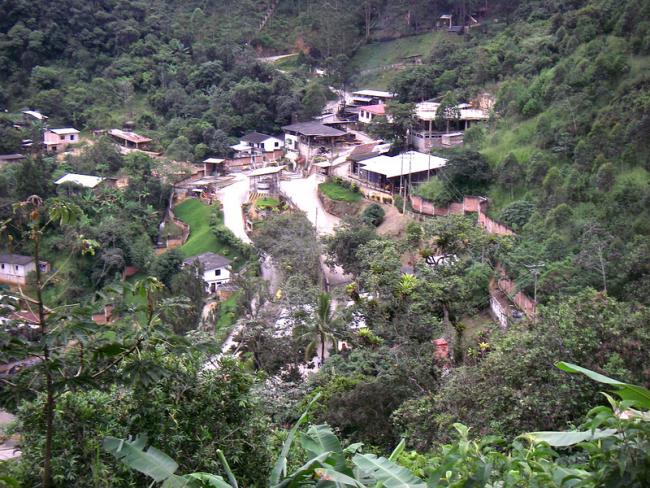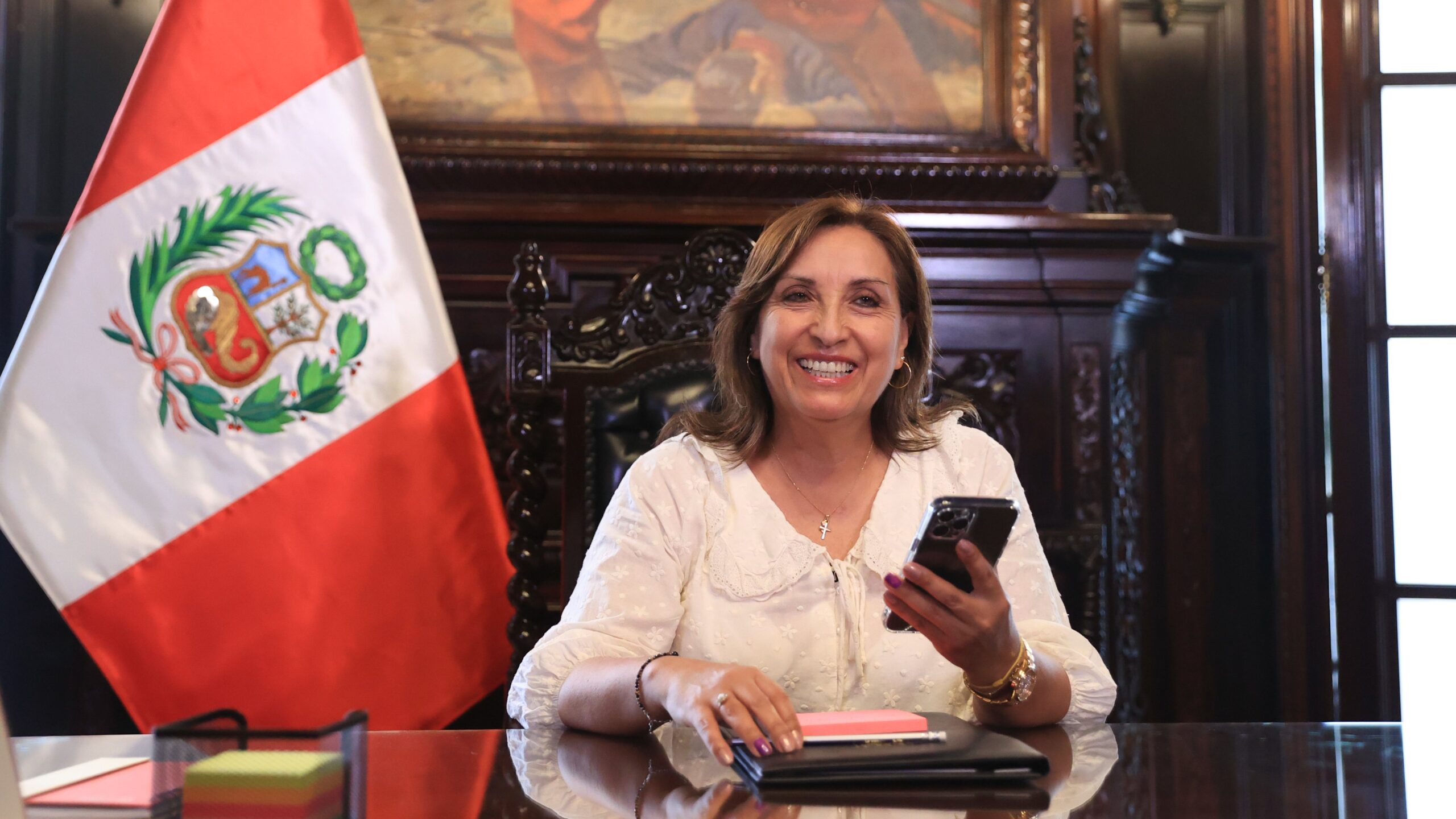
Central America, Dispatches, Honduras
Alternatives to Detention Leave Some Honduran Immigrants in “Shackles”
December 16, 2014 By Nicki Fleischner
NEW YORK — On an average weekday Eva, a 39-year-old woman from Honduras, never leaves a 15-block radius in the Bronx. From bringing her two children to school, to taking English classes, visiting her church and running errands, her life is mapped on a now-familiar route — one that is precisely tracked by the electronic monitoring device strapped to her ankle.
Eva, who asked to have her name changed because she is currently going through deportation hearings, received the device from immigration officials in New York on July 15, 2014, one month after she arrived in the U.S. from her home in San Pedro Sula – a city known as the murder capital of the world.
“So much has been happening that I forgot my birthday last month,” Eva says in Spanish as she walks to church, passing shop windows filled with Christmas decorations though it is not yet Thanksgiving. “But my daughter’s is next month and I will remember.”
Eva pulls down on the blue beanie covering her dark, shoulder-length hair and a smile spreads across her face. Usually serious and reticent, Eva noticeably lights up when discussing her two children – Gabriel, 14, and Daria, 5. Since they left Honduras in June, Eva, Gabriel and Daria — whose names have also been changed — have not spent more than one school day apart. “Where I go, they go,” she says.
Walking beneath a subway overpass, a red binder of English class assignments tucked under her arm and her ankle monitor strategically covered by a pair of loose-fitting pants, Eva stops at a street vendor selling used shoes and clothing.
“Isn’t this one pretty?” Eva lifts a children’s pink puffy jacket. “Daria would love it.” It will be Eva and her children’s first time experiencing winter, and the November air is already crisp.
“How much is it?” The jacket is $7. Eva hesitates a moment before hanging it back on a metal fence. In two hours she will have to pick Gabriel and Daria up at school, and Eva still needs to eat lunch.
Though Eva’s electronic monitor only limits her from crossing state borders, she rarely strays from the streets and buildings of her daily routine: navigating available New York City resources and immigration procedures to assure her and her children’s daily survival.
Eva is one of 65 Garifuna women, a group of mixed African and indigenous decent originally from Central America’s Atlantic Coast, who live in the same Bronx community and have received an electronic monitoring device since their arrival in the city. The monitors are part of a larger, decade-old U.S. immigration program that attempts to ensure new undocumented migrants appear for their ordered hearings and check-ins, without having to lock them up in costly detention centers viewed by critics as inhumane.
The Garifuna are only one group of immigrants that have received the monitors. In July, in response to an influx of tens of thousands of unaccompanied minors and families traveling together from Central America who under current law are often released from detention into the custody of family members, the White House requested emergency funds, including $879 million for procedures that involved the “expansion of alternatives to detention programs.”
But for people like Eva, the monitors are an unnecessary injustice that symbolize the complicated and murky nature of immigration policies whose rationale often eludes the very people they affect.
“The ankle monitors are an abuse of human rights,” said Carla Garcia, a woman who has become the New York Garifuna community’s chief activist.
Garcia, a Garifuna woman who works with the Black Fraternal Organization of Honduras (OFRANEH), is a community organizer and source of information for the Garifuna women. While Garcia has seen electronic monitors used on Garifuna women in New York and Boston, she has only closely worked with the 65 who received monitors in the Bronx.
Nearly every Monday, Garcia meets with the Garifuna at the Bronx Spanish Evangelical Church, a space that has become a home base for the community since Danilo Lachapel, the church’s director, learned of the women’s situation in June. The church’s fluorescent-lit gymnasium is a place where the Garifuna can voice concerns, avail themselves of resources such as donated hot meals and strategize for impending immigration battles.
“Here we find love, and we find the people that support us,” Eva said.
The main topic at church meetings is the ankle monitors, referred to as “grilletes” or “shackles” in the women’s native Spanish. About half of the Garifuna women have already had their grilletes removed and replaced by voice recognition software in their phones that allows for regulated check-ins to Immigration and Customs Enforcement officials. On Dec. 3, ICE officers told Eva that her monitor would be removed and replaced by phone check-ins as well, but it remains unclear when the transition will occur.
In Honduras, the Garifuna are an “invisible” people
When Eva left San Pedro Sula with her children this summer, she did not know what the journey would entail. A worker at a factory manufacturing shirts for Nike and Hanes, Eva had never traveled outside of Honduras. Some of her friends and family had moved to New York, but she rarely spoke to them.
Eva, Gabriel and Daria traveled to Guatemala by bus, where they stopped at a train station in the capital to beg for money. They then took a second bus to Mexico, before crossing the border into the U.S. by foot.
“I don’t like to talk about the experience,” Eva said. She was hesitant to share details about their migration, which culminated in a one-week detention at a facility in Texas before they were released and took a third bus to New York.
Pablo Blanco, a 38-year-old Garifuna who directs Elite Caribe International, a group that promotes Garifuna culture in the diaspora, said that many Garifuna women have been reluctant to open up about how and why they came to the U.S.
“A culture of fear has been instilled in these women, and now they don’t want to talk,” said Blanco, who has been attending the weekly meetings at Bronx Spanish Evangelical Church.
Garifuna from Honduras have been immigrating to the U.S. for decades. Around 1,000 women and children were part of the 88,491 Honduran migrants apprehended at the U.S. border between October 2013 and August 2014, according to Customs and Border Protection.
While Eva declined to discuss the reasons behind leaving, broad patterns affecting the Garifuna are clear. The Garifuna are not only fleeing violence in a country with the highest per capita homicide rate in the world, but also a government that has long marginalized their Afro-indigenous community.
Human traffickers known as “coyotes” facilitate the Garifuna migration, Garcia said, telling the women that if they travel to the U.S. with their children they will be allowed to stay in the country and work.
Honduran President Juan Orlando Hernandez acknowledged the problem of coyotes in a July press release, and U.S. authorities have tried to counter the use of human traffickers through a Danger Awareness Campaign that includes billboards and radio announcements throughout Central America that explain that new arrivals will not be exempt from deportation.
Blanco said, however, that the Honduran government also helps perpetuate the problems that push the Garifuna to leave their homes. In Honduras, he said, the Garifuna occupy an “invisible” status, and the government routinely displaces members of the community who live on pristine coastal lands ideal for tourism projects. In one recent example, 400 Garifuna from the Barra Vieja community were evicted by members of Honduras National Police in September in order to clear territory for an Indura Beach and Resort development.
“In Honduras it’s like we’re discriminated twice,” Blanco said. “We’re black and indigenous.”
“The Garifuna came here because they thought it would be different and that they would be safe,” Garcia, the activist, said. “And instead they are treated like criminals.”
“We do not have clear guidance on why a person is placed on an electronic monitor”
Eva says that during her first moments in the U.S., Border Patrol agents had her sign several documents.
“The first thing we learned in school is not to sign what we don’t know,” Eva said. She initially resisted, asking the agents for clarification of the meaning of the English documents, which she could not understand.
“The agent had been speaking to me in English,” Eva said, “but then he switched to Spanish and yelled, ‘Do not question miss! Sign. Quickly.'” Intimidated and confused, Eva unwittingly signed a consent form justifying her electronic monitoring.
The use of electronic monitors is part of an Immigration and Customs Enforcement program known as “alternatives to detention,” which started in 2004 as a way to supervise undocumented immigrants without the high costs and unnecessary restrictions involved with detention in a facility. The federal funding for detention alternatives, used for those who are low flight risks and pose no danger to society, has steadily expanded over the years and the Department of Homeland Security requested $94.1 million in their 2015 Budget to implement the programs.
Since 2009, all of the programs under the “detention alternatives” umbrella have been consolidated into a single contract known as the Intensive Supervision and Appearance Program (ISAP). According to an ICE representative, ISAP uses case management, electronic monitors and voice recognition software, in order to allow immigrants to remain in their communities while still ensuring that they show up for mandatory appointments.
As of December, there were 1,469 people enrolled in ISAP in New York, with 885 reporting telephonically and 584 on electronic monitoring.
While immigration officials determine who is eligible for ISAP, the daily monitoring of participants is subcontracted out to BI Incorporated, a subsidiary that is owned by the GEO Group, the country’s second-largest private prison company. In September 2014, ICE renewed its five-year contract with BI, which is “expected to generate $47 million in annualized revenues” for the company, according to a press release by the GEO Group.
A 2012 report by the Rutgers School of Law raised concerns about using private contractors for ISAP, saying that such a system “left the government with a need to fulfill its contractual obligations by maintaining a revolving door of participants.”
BI declined to comment for this article and referred all questions about the contract to ICE.
For the Garifuna women, their electronic monitoring has appeared arbitrary. Wanda Salaman, director of Mothers on the Move, a Bronx organization that has been working with the Garifuna, said she knew women who arrived in the Bronx in February who never received monitors, and that they only appeared over the summer.
Alina Das, a New York University law professor who specializes in immigration rights, echoed the criticism.
“We do not have clear policy guidance on why a person is placed on an electronic ankle monitor,” Das wrote in an email, “or what they have to do to get off ankle monitoring and onto other forms of less invasive supervision.”
According to an ICE representative, officials have the discretion to choose what kind of technology a participant will receive as well as mandate the frequency for visits and check-ins.
Camille Mackler, director of legal initiatives at the New York Immigration Coalition, met with New York ICE representatives in September in an effort to understand how policy has changed since the immigration crisis and how officials decide who to put on monitors. According to Mackler, ICE said that they have two options for making sure newly-arrived immigrants show up for mandatory appointments, detention or monitoring, and that the latter is preferable.
“It is my suspicion,” Mackler said, “that given the overwhelming surge of immigrants the Obama administration and ICE have been implementing strategies of deterrence to stop the flow.”
Luisa is a Garifuna who successfully had her electronic monitor replaced with telephonic reporting after two months. She did not have a lawyer representing her case, but said that at her latest check-in, officials removed her “grillete” just as abruptly as it had been put on. Mackler said that the switch to telephonic reporting seems to be the “natural de-escalation” of monitoring for those who have demonstrated that they are complying with immigration procedures.
Not enough pro bono lawyers to go around
Picking her children up in the crowded school cafeteria at P.S.5 Port Morris, Eva opens her daughter’s pink and purple backpack to find two pairs of shoes wrapped in a large plastic bag.
“My teacher gave them to me,” Daria says, showing off a pair of Timberland boots.
Moments later Gabriel strolls up to the table, a basketball hooked between his arm and hip. “I’m staying after school to play with friends,” he tells his mother.
Despite their frustrations with immigration procedures, Eva and other Garifuna women enjoy the improvement of their daily lives in New York when compared to Honduras.
“My school here is so much better than it was in Honduras,” Gabriel said. In San Pedro Sula, school was frequently cancelled due to outbreaks of gang violence, but at P.S.5 he enjoys his math class and plays basketball after school nearly every day with friends.
In August, representatives of the Mayor’s Office of Immigrant Affairs co-sponsored an event in the Bronx to help connect Garifuna women to city services — like public school enrollment, health care and organizations that provide free legal council.
Such outreach has meant that Eva and her children received MetroPlus Health Plan cards, which covered the required vaccinations for Gabriel and Daria before they enrolled in school in September.

Community members select free produce from a farmers market stationed in the Bronx Spanish Evangelical Church parking lot.
Walking out of the Port Morris building, Daria begs to stop at every bodega and churro stand along the way, looking for treats her mother does not have the money to buy. A man sorting fruit outside passes the girl a banana, procuring three more for a group of kids mingling on a nearby stoop, and demonstrating a silent understanding of the community’s need for generosity.
Yet for every opportunity there is another daily obstacle. One of Gabriel’s classes requires he submit homework online, a complicated logistic for a boy who has no easy access to a computer.
While city organizations can provide temporary relief, the Garifuna women’s stay in the U.S. can only be guaranteed at a federal level. President Obama’s November executive action on immigration reform, while protecting millions of undocumented immigrants from deportation, could actually hurt the Garifuna: the plan prioritizes deporting those who crossed the border illegally since January 2014.
The legal relief most likely available for the Garifuna children is one-parent Special Immigration Juvenile (SIJ) status, said Mackler. According to U.S. Citizenship and Immigration Services, eligibility for SIJ requires an individual be under 21 years of age and proof that they cannot be reunited with one or both of their parents due to abuse, abandonment or neglect. While the unaccompanied minor migrants are natural candidates for SIJ, Garifuna children who only migrated with their mothers could also qualify if a lawyer could provide evidence that their father had abandoned them.
For mothers like Eva, the best legal relief available would have to be considered on a case-by-case basis.
Eva’s next hearing date is Feb. 11, which gives her time to seek legal council, but it is a complicated task at a time when lawyers have been inundated with immigration cases.
“The vast majority of Garifuna women would qualify for legal relief,” Mackler said, “but there aren’t enough pro bono lawyers to take on their cases.”
Seeking asylum is one strategy that has become popular, Mackler said, but also comes with its own complications. In asylum cases, officials require people to prove that they would suffer persecution in their home country because of their race, religion, nationality, membership in a social group or political opinion. Some 2,354 people requested asylum from Honduras in 2013, according to the U.S. Department of Justice, a number that has more than tripled since 2009. Only 92 were granted it.
For now, Eva and the other Garifuna women will remain in legal limbo along with tens of thousands of other Honduran immigrants.
As Daria quickly finishes her banana, Eva takes her daughter’s hand, dragging her across the street. The pair passes the same vendor where Eva stopped to look at a jacket earlier this afternoon. This time Eva stares straight ahead and keeps walking.
Images: Nicki Fleischner
About Nicki Fleischner
Nicki is a Henry MacCracken Fellow at New York University, where she is earning a masters degree in Global Journalism and Latin American Studies. She is from New York City but has lived and traveled throughout the Caribbean, where she studied, wrote and worked as an English and Spanish teacher. She is particularly interested in contemporary culture in Havana, Cuba. Nicki earned her bachelor’s degree in International Literary and Visual Studies at Tufts University.
< Previous Article

December 16, 2014 > Staff
Haitian Prime Minister Defends Record After Resignation
Next Article >







4 Comments
It’s a nice story, but there is no substantive analysis concerning why Garifuna women in particular should be allowed to stay in the United States absent a showing they are being persecuted in Honduras (“the vast majority of Garifuna women would qualify for legal relief” – how?). Because violence is common in so many places around the world, fleeing violence, short of genocide, is not a legal reason for being allowed to remain in the United States, because the U.S. cannot accept millions of people who would qualify for fleeing violence.
[…] Fleischner’s article, titled “Alternatives to Detention Leave Some Honduran Immigrants in ‘Schackles‘” appears on the Latin America News Dispatch. In her piece, Fleischner follows a […]
[…] Alternatives to Detention Leave Some Honduran Immigrants in “Shackles” NEW YORK — On an average weekday Eva, a 39-year-old woman from Honduras, never leaves a 15-block radius in the Bronx. From bringing her two children to school, to taking English classes, visiting her church and running errands, her life is mapped on … Read more on Latin America News Dispatch […]
[…] four years of checking in they would put me in the ISAP program,” Castro said, referring to the Intensive Supervision and Appearance Program , an alternative to detention through which ankle monitors are administered. “For me, this is a […]
Comments are closed.